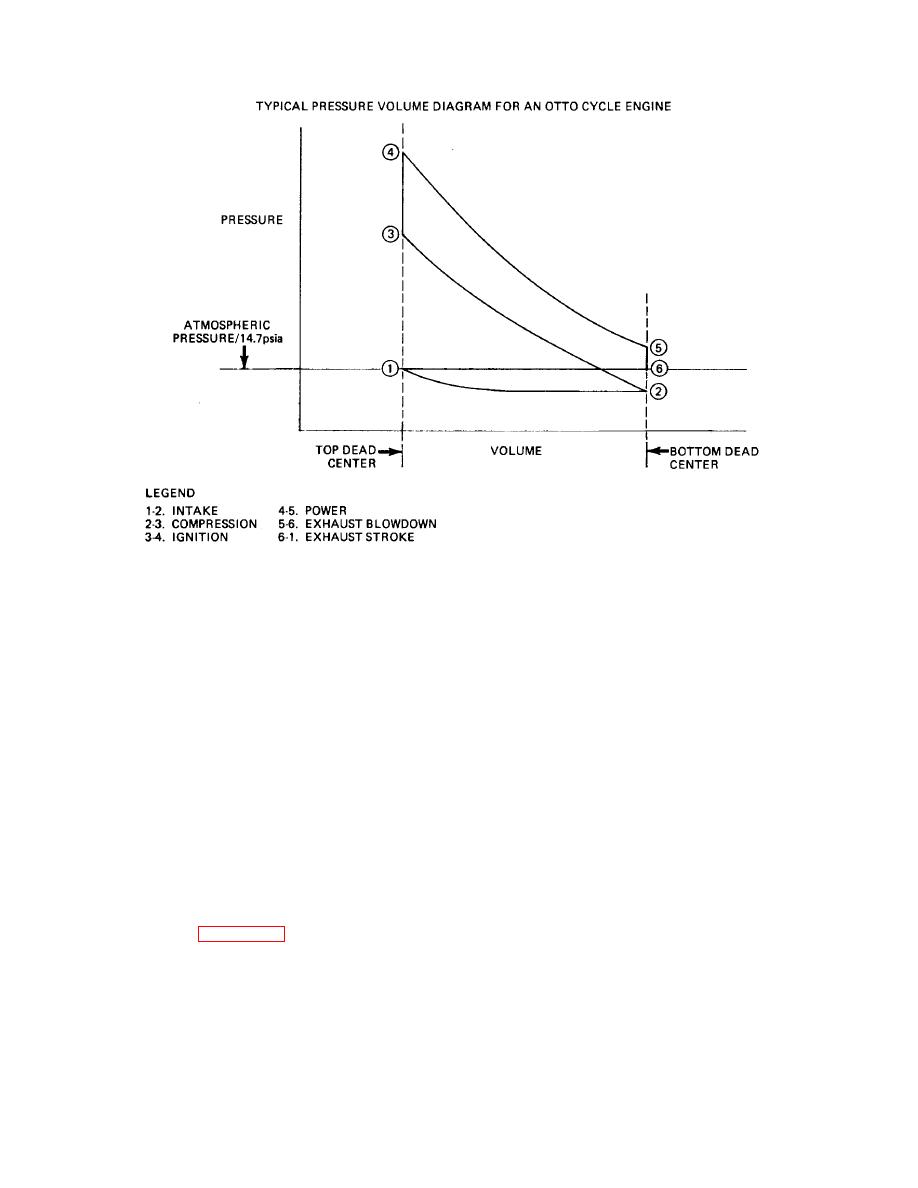
| Tweet |

Custom Search
|
|

|
||
 TM 9-8000
Figure 10-4. The Otto Cycle
relative to the compression process. Combustion takes
sequence. As the piston travels upward, the volume in
place by maintaining constant pressure and increasing
the cylinder decreases, resulting in a pressure rise. At
volume due to the heated charge being ignited (line 2-3).
line 3-4 ignition occurs. Igniting the charge at a constant
As power is extracted by the turbine blades, the pressure
volume causes a severe pressure increase in the
is decreased and volume increases (line 3-4). The
cylinder. The piston now begins to move downward on
combustion charge then is exhausted (line 4-1), causing
the power stroke (line 4-5). As this happens, the
a drop in volume to point 1 on the graph.
pressure in the cylinder decreases as the moving piston
increases the volume. At point 5 the exhaust valve
10-6. Continuous Combustion. As discussed above,
opens and the cylinder is allowed to blow down. As this
the four-stroke/cycle piston-type engine performs four
happens near the end of the power stroke, the volume
separate discrete events.
Each event must be
remains constant and pressure rapidly decreases. Line
completed before the next one begins. Basic gas turbine
6-1 indicates the action that happens during the exhaust
engine operation consists of four events that are
stroke. The piston moves upward to expel the burned
essentially the same as the piston-type reciprocating
gases causing a decrease in volume. As a result of the
engine; however, these events combine to form a
cylinder being vented to the atmosphere, the pressure
continuous cycle. As the gas turbine operates, each of
remains close to atmospheric in the cylinder during this
the four events transpires continuously. In the gas
stroke.
turbine engine, as long as there is a supply of air and fuel
to burn, expand, and maintain turbine speed, the cycle is
b. Brayton Cycle. Figure 10-5 graphically illustrates
said to be continuous and self- sufficient.
the pressure/volume relationship for the Brayton-cycle
engine. At point 1 air enters the compressor at constant
10-7. Thermal Comparison. The piston-type engine
pressure (atmospheric) and constant volume. Line 1-2
operates at relatively cooler temperatures TA233506
illustrates an increase in pressure and decrease in
volume,
10-5
|
||
 |
||